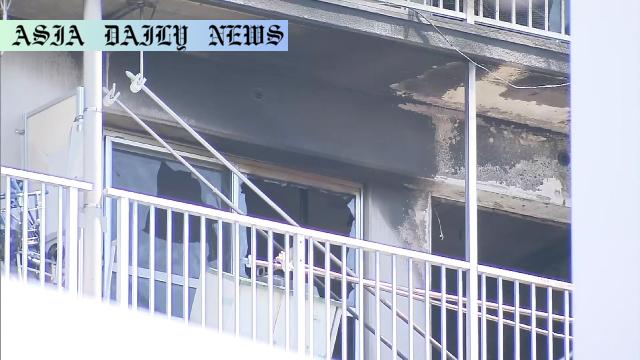Tokyo apartment fire: A fire broke out in Tokyo’s Shinagawa Ward injuring 5 people, suspected to have been caused by a portable fan.

Fire Breaks Out in Tokyo Apartment, Injuring Five
A devastating fire erupted in an apartment building located in Tokyo’s Shinagawa Ward early Wednesday morning, leading to injuries for five individuals. The incident, which occurred on the ninth floor of the building, has brought concerns over the safety of electronic devices in residential areas. Emergency services were alerted to the fire at approximately 8:30 a.m., responding immediately to the critical situation. Investigations suggest a probable cause: a small portable electric fan that was charging at the time may have triggered the fire.
Emergency Response and Containment of the Fire
The Tokyo fire and police departments mobilized a total of 50 fire engines to tackle the blaze. Crews worked tirelessly to contain the fire, managing to put it out within about two hours. Despite their rapid response, the fire caused significant damage to several dozen square meters of the affected apartment unit. Initial investigations indicate that the fire was localized, preventing a larger disaster thanks to the swift and effective action of the emergency services.
Impact on Residents and Investigation Progress
Five individuals, including the male resident of the affected unit, suffered from smoke inhalation and are currently receiving medical treatment in a local hospital. The incident highlights concerns over the potential dangers posed by electronic devices, particularly small handheld gadgets during charging. Authorities are now conducting a detailed investigation to confirm the exact cause of the fire and prevent future incidents of this nature. The portable fan is under forensic scrutiny as experts examine its charging mechanism and electrical functionality.
Commentary
An Urgent Call for Better Electronic Safety Measures
The recent fire in Tokyo’s Shinagawa Ward is a harsh reminder of the potential risks posed by everyday electronic devices. The probable involvement of a portable handheld fan in causing such destruction should push us to rethink the safety standards of our gadgets. While convenience is an undeniable factor in the design of modern electronics, safety should not be overlooked at any stage of production, usage, or charging.
Proactive Efforts to Avert Such Tragedies
Consumers and manufacturers share a joint responsibility to ensure electronic safety. Consumers should remain vigilant by using certified chargers and keeping devices unplugged when not in active use. Meanwhile, manufacturers need to adhere to stricter guidelines to produce products with built-in safety mechanisms, such as auto shut-off systems to prevent overheating during charging. Regular awareness campaigns emphasizing the proper use of electronics can play a significant role in reducing such avoidable mishaps.
Looking Ahead: The Need for Comprehensive Policies
This incident sheds light on the urgent need for stronger regulatory frameworks surrounding electrical appliances and fire safety in urban housing. It also underlines the importance of regular fire drills and disaster readiness in densely populated residential buildings. As consumers and stakeholders work toward preventing such incidents, policymakers must build a future where cities can tackle unforeseen challenges swiftly, prioritizing public safety at every step.


